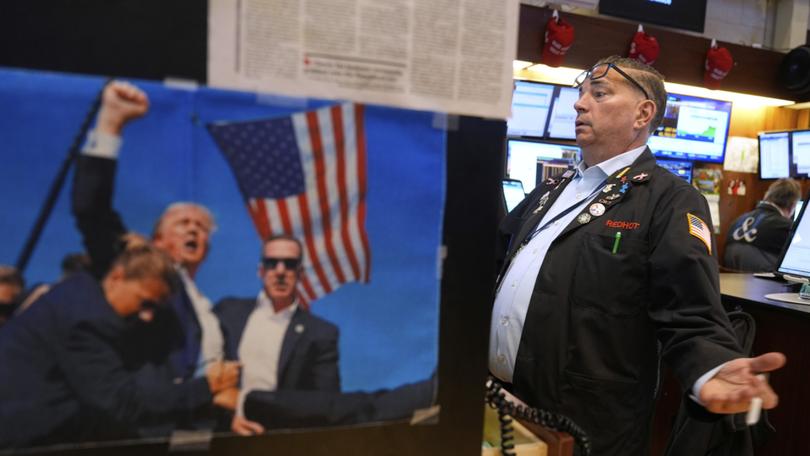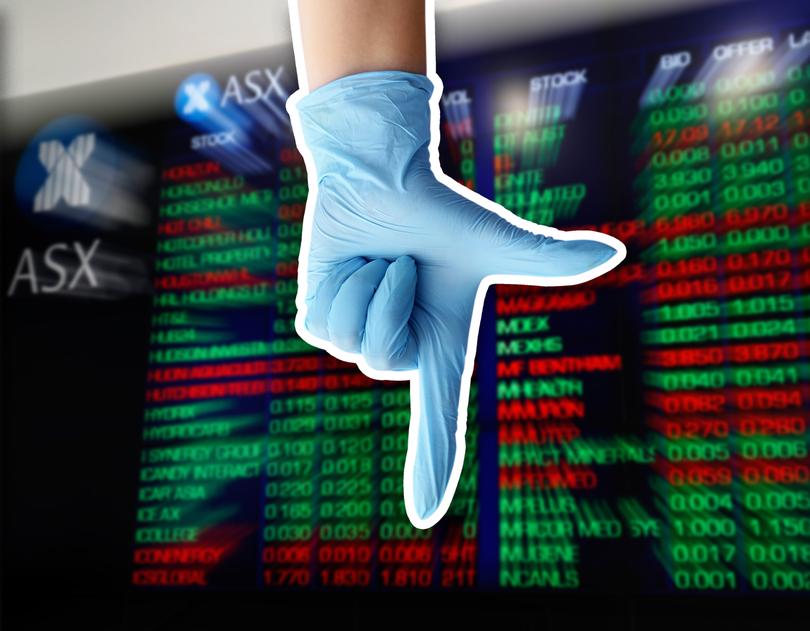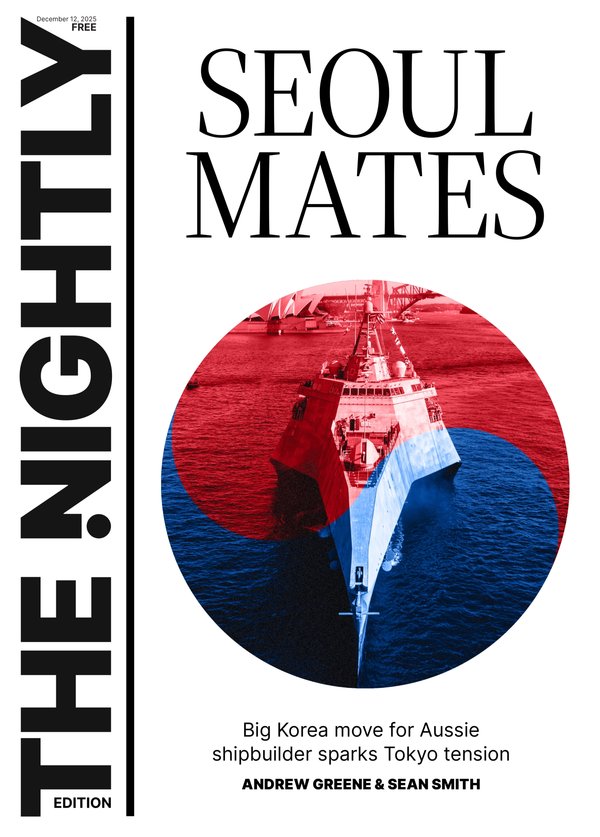JACKSON HEWETT: How did Liberation Day affect the Australian share market?

Donald Trump’s unprecedented tariffs — the most sweeping in over a century — triggered a bloodbath on local markets, as traders digested the prospect of global growth slowing under the weight of widespread levies.
As much as $31 billion was wiped off the value of the benchmark ASX 200, with 10 of the 11 sectors closing in the red. A late rebound helped pare back some losses.
Information technology, energy, and materials stocks were hardest hit, as investors fled to the safety of government bonds and gold.
Sign up to The Nightly's newsletters.
Get the first look at the digital newspaper, curated daily stories and breaking headlines delivered to your inbox.
By continuing you agree to our Terms and Privacy Policy.Australia’s major miners also suffered, with BHP, Fortescue and Rio Tinto all down more than 2 per cent amid fears the 34 per cent tariff on China, and 24 and 25 per cent tariffs on Japan and South Korea, would reduce demand for iron ore. Whitehaven Coal slumped more than 7 per cent.
Other companies with direct exposure to the tariffs were savaged.
Ansell plunged 14 per cent on fears its manufacturing hubs in Asia would be hit by duties of up to 36 per cent, while luxury goods importer Cettire fell 15 per cent after Citi issued a negative rating, citing a deteriorating global luxury market. Treasury Wine dipped 2 per cent, despite assuring investors that only 15 per cent of its product is sold in the US.
Some stocks gained after the tariffs turned out to be less severe than expected. CSL rose 0.5 per cent following a pharma exemption, James Hardie and Bluescope gained 2.8 and 0.63 per cent respectively, and Lynas surged 3 per cent on critical minerals relief.
AMP economist Shane Oliver said the tariffs were “worse than expected,” raising the probability of a US recession to 40 per cent and potentially shaving 1 per cent off global growth.
“Given the even bigger threat to global growth, it looks like share markets will have a further leg down. Consistent with this, US futures are now down 3.5 per cent. Our assessment remains that shares will have a 15 per cent-plus correction from this year’s high,” Mr Oliver said.
In early trading, Asian markets were sharply lower, with major falls in Hong Kong and Japan. Christian Baylis, chief investment officer at Fortlake Asset Management and a former RBA economist, said there had been “seismic” moves into safe-haven bonds in both the US and Europe, as investors worried about the impact on US consumers.
Gold edged higher, while oil fell 2.1 per cent on renewed growth concerns.
Accelerated rate cuts
On Tuesday, Reserve Bank governor Michele Bullock said the central bank was modelling the potential impact of the tariffs on Australian growth. Some economists now believe the announcement could accelerate the RBA’s path to rate cuts.
RBC Capital Markets economist Su-Lin Ong said the mounting risks to global growth ran counter to the RBA’s decision to hold rates at 4.1 per cent this week.
“Today’s global developments perhaps argue the opposite” of the RBA’s “cautious tone,” Ms Ong said.
Mr Baylis added that diverted goods from the US could lower prices in Australia, potentially giving the RBA more room to cut rates. “If it’s a structural drop, you’re going to have a lot of TVs, a lot of cars, and a lot of things trying to find a home pretty quickly. That would potentially push prices down.”
However, he noted the effect may be uneven: “Across the aggregate, it’s very hard to get a full balance of where all the prices go.”
NAB’s Alan Oster said the tariff shock could cut global growth by 0.5 per cent next year while adding 0.5 per cent to global inflation. NAB is still forecasting a rate cut in May, with the cash rate falling to 3 per cent by early next year.
“The RBA will just watch the data, especially with so much uncertainty,” Mr Oster said.

Agriculture a mixed picture
According to Rabobank, Australian agriculture is “not disadvantaged compared with other trading partners and... is possibly in a slightly better position.” Despite the 10 per cent tariff, Rabobank expects US demand for Australian beef to remain high until 2029 due to the small size of the US herd.
The US is Australia’s top beef export market and number three for lamb. Although President Trump highlighted Australia’s ban on US beef imports during his address, no reciprocal action appears likely. For wine, the US is Australia’s third-largest market and will apply a 10 per cent tariff — half that of EU producers.
Rabobank also sees a potential boost for Australian wheat, which competes with the US in key Asian markets. If countries like Japan or South Korea impose reciprocal tariffs on US wheat, Australian growers could benefit.
National Farmers’ Federation president David Jochinke slammed the tariffs as “dumb economic policy from the US.”
“It’s severely disappointing given the history and depth of our partnership with the US,” he said. “This will result in some pain for farmers here, but ultimately it’s the US public who will wear the cost of this at the checkout.”
Red Meat Advisory Council chair John McKillop said the impost would hurt American consumers most. “Australian beef is in an estimated six billion hamburgers consumed each year in the US, and this tariff will cost the US consumer an additional US$180 million per year.”
No change for steel and aluminium
The US did not place additional tariffs on steel or aluminium, leaving the sector exempt from this latest round. However, anti-dumping remains a key concern for the industry, which fears competition from cheap imports.
The aluminium sector renewed its call for bauxite, alumina and aluminium to be added to Australia’s Critical Minerals list.
No retaliation, says business
Australian business groups have urged the Government not to retaliate with tariffs of its own, calling such a move “self harm.”
“There is no benefit to Australian consumers, businesses and producers by retaliatory tariffs, and we agree with the decision of the Australian Government to rule them out,” said Andrew McKellar, chief executive of the Australian Chamber of Commerce and Industry.
Business Council of Australia chief executive Bran Black said Australia should focus on being an attractive destination for global capital.
“We need policies that ensure businesses have the best chance to be successful, so we can continue to drive economic growth and new and better jobs for Australians,” he said.

